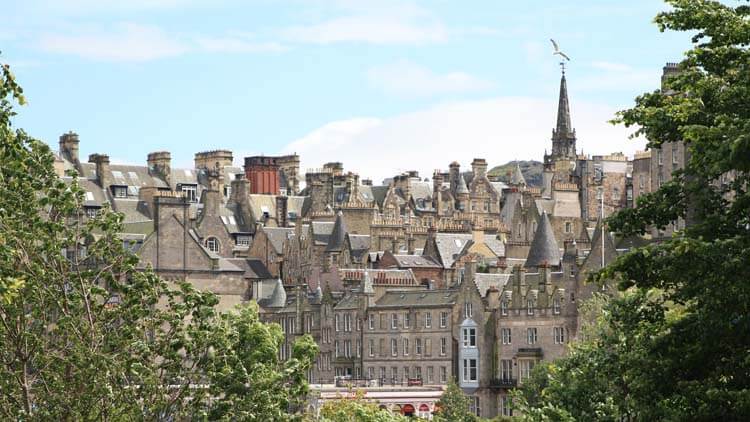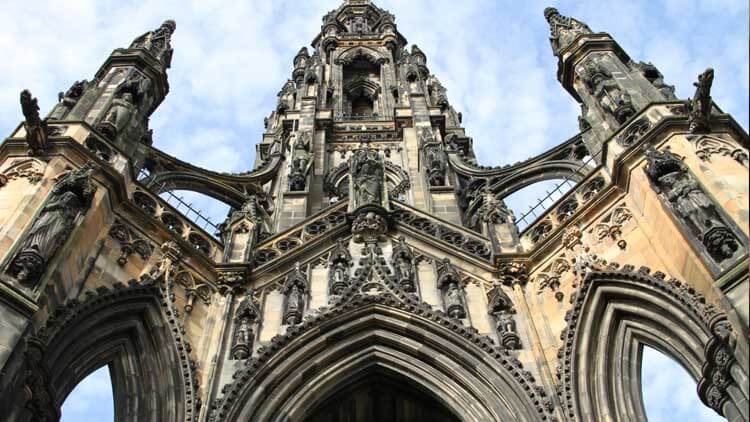The Nor’ Loch
These gardens used to be a stinking marsh. Called the Nor’ Loch, it formed the Northern boundary of Edinburgh. Already useful for defence, it was made more impassable in the fifteenth century by the damning of a nearby stream, which flooded the valley.
In those days, however, Edinburgh had, to put it politely, a very limited sanitation system. All waste – human and otherwise – tended to end up in the streets and, although there was occasional interventions by the Burgh Council to clean it up, it tended to only be washed away by heavy rain.
This rain, unfortunately, washed a lot of that waste down into the Nor’ Loch. As you can imagine, over the centuries it became a stinking reservoir of filth.
Witchcraft trials
In the sixteenth century witchcraft trials became popular in the city. Across Europe a common way of testing whether suspects were actually witches was by dropping them in a body of water: if they floated they were guilty.
While in Scotland this technique was not widely used, there are stories that some suspected witches were dunked in the Nor’ Loch, but the trial was abandoned when the mob realised that the Loch was so clogged up with the population’s waste that it was very difficult to get anything at all to sink in it, let alone people.
With the building of the New Town in the late eighteenth century, the Nor’ Loch was drained so Edinburgh’s two halves could be connected and it eventually became Princes Street Gardens.

Scott Monument
In 1840 the most prominent feature of Princes Street Gardens began construction – The Scott Monument (it’s the thing that looks a little bit like a gothic spaceship). It is a memorial to Scottish author, Sir Walter Scott, who, in his day, was a hugely popular author worldwide.
After his death it was decided to erect this monument to him. It is actually the tallest monument to an author anywhere in the world – that’s how much we loved him. We clearly didn’t think that was quite enough of a celebration of him, because we decided to also name our main train station Waverley after his first novel (it is, perhaps unsurprisingly, the only train station in the world named after a novel).

Interesting statues
In the gardens there are statues of a number of other prominent Scots. One depicts David Livingstone, arguably the most famous European explorer of Africa.
He is best remembered for losing all contact with the outside world for six years, with the eventual result that another explorer, Henry Morton Stanley, was sent after him. After searching for months, he finally found Livingstone and greeted him with the famous line “Dr. Livingstone, I presume?”
There’s also a statue of the Scottish doctor James Simpson. Simpson was the first to discover that chloroform could be used as a safe anaesthetic, which had massive impacts on childbirth and surgery.
He did this by having two friends round every evening to sit in his dining room with him and sniff large quantities of experimental chemicals to see what the effect would be. It’s definitely not something that we’d recommend that you try at home, but we’re sure they had a lot of fun.

Wojtek, the bear
The statue with probably the most interesting story behind it, however, isn’t of a person at all, but of a bear. Unveiled earlier this year, this is the statue of Wojtek.
Wojtek was a bear born in 1942 in Iran, however shortly after his birth his mother was shot and he was left abandoned. He was found by a local boy who ended up selling him to members of the Polish army en route to Tehran.
The soldiers grew so close to him that they decided, rather than leave him behind when they were moved to Italy, they would enlist him into the army instead. This was not merely an honorary gesture – he went on to be involved in several battles, carrying food supplies and live ammunition.
He originally had trouble eating and so was fed condensed milk from an old vodka bottle. Being around all those army boys was bound to have an impact though, and so he quickly moved onto drinking beer and was even taught to smoke.
His statue acts as a memorial to the many Polish soldiers who fought against Fascism, as well as being a sign of the historic ties between Scotland and Poland. Given its serious nature it is understandable, if slightly saddening, that Wojtek is depicted with neither beer nor cigarettes.
After the war he moved with the rest of his Company to Scotland, and in 1947 he moved to Edinburgh Zoo where he lived out the rest of his days.








